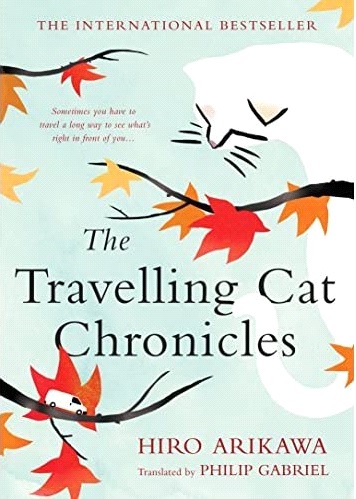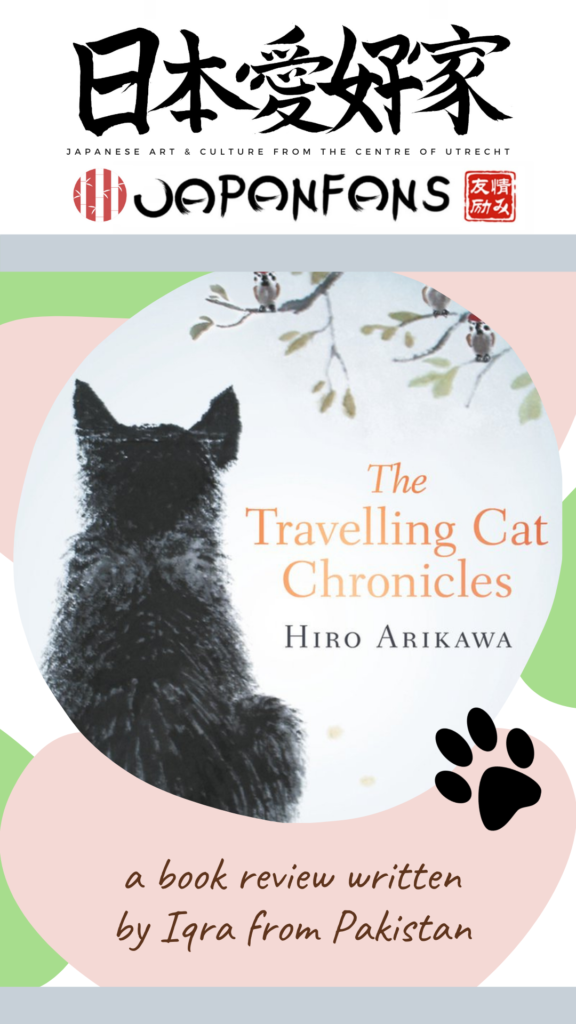This month, the Japan Fans Book Club is reading “The Travelling Cat Chronicles” by Hiro Arikawa. Iqra is a Japan Fan from Pakistan who read this book (in English) and shares her impressions below. Thank you, Iqra!
As John Butler explains (source), cats enchant the Japanese, who have a variety of shrines dedicated to them. Some cats live in train stations and cat cafés where people may pet and socialize with them. We’ve all seen the Maneki-Neko, the beckoning good-luck cat that appears in Japanese stores everywhere, assuring the business’s success and prosperity.
They also like writing about them; in Sei Shonagon’s Pillow Book, Emperor Ichijo, the first Japanese emperor to own one, misplaces his cat, and everyone must search for it.
Natsume Soseki, Japan’s most famous modern author, spent two years writing his three-volume masterpiece “I Am A Cat.” Because the reading public desired more than Soseki had meant to write, it was split into three volumes.
There’s even a Japanese detective cat named Holmes, thanks to novelist Jiro Akugawa, who can understand human language and has remarkable reasoning talents, which he uses to pair up with a cop to solve cases. (source)

Arikawa Has an Uncanny Ability to Make Cats Seem Real
The distinction is that this book is delicate, and the comedy isn’t often biting; it’s a book about connection and communication, as well as the nature of the cat-human, or animal-human, relationship. One thing that elevates and endows human people with a sense of dignity is their love for animals. (source)
The book was written in a plain style. Don’t be fooled by the straightforward manner, while Arikawa might sometimes be deceitful. Although she has some important things to say in this book, they are quality speaking. It’s also a travel book; after Satoru adopts a stray cat and names him Nana, the two embark on a journey around Japan, seeing individuals, some of whom are from Satoru’s past.
Because of the traveling format, the book is a quest story, but we don’t know what we’re looking for, which is why the finale is so moving, and I won’t give anything away by repeating it here. Nana says at the end of the book, “As we tick off the memories from one journey.”
“We’re headed on another adventure. Those who went before us are remembered. Those who come after us are remembered.” The story of this book is about memories as Satoru reunites with his aunt Noriko, who elevated him. However, Nana recreates his story and attains to coexist with another cat.
As Satoru and Nana travel around Japan in the silver van, we learn about their pasts and relationships with other humans and cats. Nana and Satoru are linked by a cat named Hachi, which Satoru and his family have taken care of after his friend Kosuke’s father refused to allow him to keep it.
The Success of Arikawa’s Novel
These lighthearted touches can be found throughout the book. While Arikawa has some serious things about human-animal relationships, not to mention human love and friendship, she recognizes that these moments make the reader feel warmer and more human. (source)
The book has a folkloric quality because it is about simple human values like friendship, loyalty, and even sacrifice, not just on Nana’s part but also on Satoru and Noriko’s. Despite the allegedly depressing conclusion, this is a good novel since it emphasizes continuity over change. “My story will come to an end soon,” Nana notes near the decision, “but it’s nothing to be unhappy about.”
Iqra’s Final Verdict:
The Traveling Cat Chronicles is a fun book to read. The originality of this novel is its subtle yet persistent fascination, which insinuates itself into your heart long after the meeting has finished, much like a gentle kitty lover.

